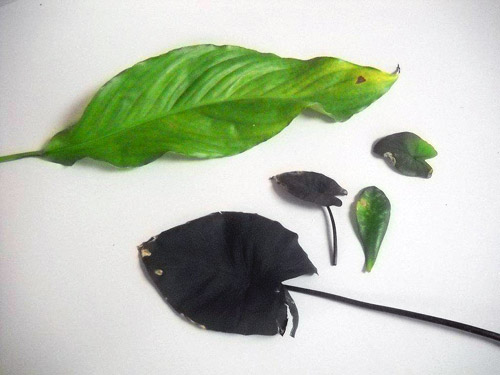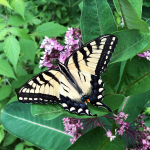Gardens
Remedies for Common Houseplant Ailments.
Try these houseplant remedies when your plants start to wither and droop. Houseplant ailments fall into three main categories: Fungal, Viral, and Pests. Fungal Diseases: Fungal diseases are usually due to mold and mildew growth, and are easy to cure. Symptoms of fungal disease, more commonly referred to as “leaf spot” include leaf loss, stunted […]

Coffee By Design | Portland, Maine
Photo Credit : Katherine KeenanHouseplant ailments fall into three main categories: Fungal, Viral, and Pests.
Fungal Diseases: Fungal diseases are usually due to mold and mildew growth, and are easy to cure. Symptoms of fungal disease, more commonly referred to as “leaf spot” include leaf loss, stunted growth and soft stems and stem bases. Mold and mildew may or may not be visible on areas of the infected plant. Fungal diseases are usually due to over-watering. If your plant still shows signs of life—such green areas and a sturdy stem and base—there is a good chance that the plant may be brought back to full health. First, remove the plant from it’s current container and loosen the root system. Remove all noticeably dead or dying foliage. Re-pot the plant with fresh potting soil in a container with adequate drainage. Be sure to put the plant in the recommended environment for it’s species. Water only when the soil is dry to the touch. It will take a few weeks for your plant to regain it’s health, so be patient. Viral Diseases: Unfortunately, plant viruses are not curable. Symptoms of a plant with a virus include: yellow streaking, spotting or mottling on the plant’s foliage, dry brownish leaves, disfigured growth (such as unusually long or “leggy” stems that are also discolored) and lack of growth. If you are not completely sure that your plant has a virus, you may opt to isolate it and give it extra care to rule out any other causes such as over- or under-watering,which can sometimes mimic virus symptoms. If the plant does not show signs of healthy re-growth within a month, disposal is recommend to prevent the virus from spreading. It’s important to dispose of plants with viruses properly: Wrap diseased plants in newspaper and place in a small plastic bag before putting it into the trash. Composting a plant with a virus is not recommended as the virus may be spread to other unsuspecting plants. Pests: Damage from pests on houseplants is mainly due to mites. Mites are tiny insects that feed on houseplant foliage and reproduce quickly. Signs of a mite infestation include: rust colored spots or black dots or smudges on leaves, tiny and often times barely visible webbing on foliage, and a sticky or dewy appearance to the underside of the leaves. If you look closely, you may see small white insects moving around the crevices of the plants. To rid plants of mites: Fill a clean spray mist bottle with a mild mixture of 1/4 –1/2 tsp. of dish liquid (the type used for hand washing dishes—not automatic dishwasher detergent) to 12 ounces of warm water. Spray thoroughly. Allow to mixture to remain on the plant for five minutes before rinsing. Repeating this procedure once a day for a week has been known to work for some plants, although a sure cure can not be guaranteed. To prevent mites from spreading and infesting other plants, always quarantine any plantssuspected of hosting mites before, during and after treatment.
Photo Credit : Shelley Wigglesworth







